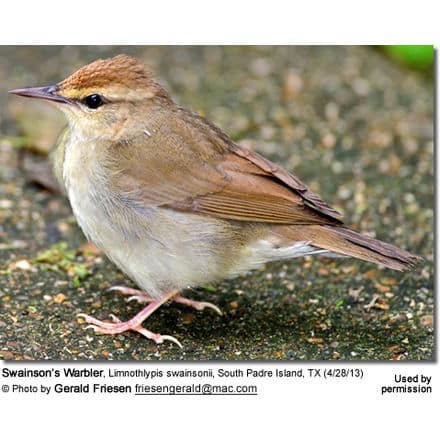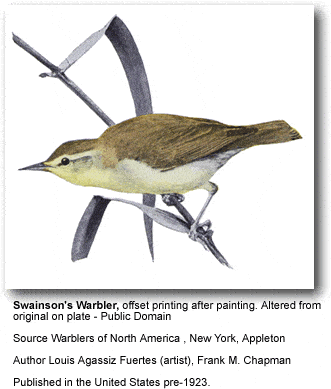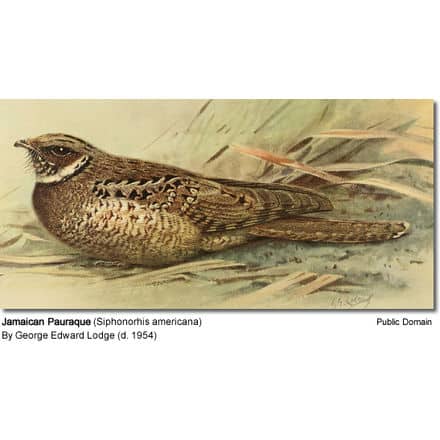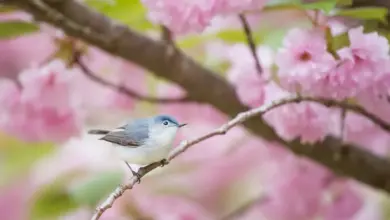Swainson’s Warblers (Limnothlypis swainsonii)
Swainson’s Warblers, Limnothlypis swainsonii, is a small species of New World warbler. It is the only member of the genus Limnothlypis.
A small and rather non-descript species of New World warbler, Swainson’s Warblers will grow to about 5 to 6½ inches (about 13-16 cm) in length and 15 grams (Graves in Winker et al. 2000) in weight. They are a plain olive-brown above and pale yellow-white below. They have a whitish eyebrow stripe that runs above their eye, and the top of their head is a rusty brown. Unlike most other New World warblers there is no difference in appearance between a male or female Swainson’s warbler.
Swainson’s Warblers are uncommon, mostly found in flooded swamplands and canebrakes of the south-eastern United States. More rarely, they will also occur in rhododendron thickets in the southern Appalachian mountains. They are a migratory species, with part of the population migrating southeastwards to the Greater Antilles and the other southwestwards to the Yucatán Peninsula region in winter.
This species begins breeding at about 10 months of age (Graves in Winker et al. 2000). Pairs form and stake out and defend a territory for nesting. Nests are fairly large and bulky, constructed from moss, grass, and small leaves situated above ground in a tangle of tall reeds or vines. The female will lay between 3 to 5 eggs. The eggs are white and sometimes, but rarely, speckled with brown. Incubation is done by the female only and lasts for about 14 days, after which the eggs will hatch. The young leave the nest about 12 days after they have hatched. It is not known how long pairs stay together, although once a pair-bond has been established they do not usually mate with other birds at least in the present nesting season. These birds become as old as 8 years (Graves in Winker et al. 2000).
No subspecies are recognized. There appears to be some divergence between populations from Arkansas and others of the coastal plains. This does fit a pattern one would expect from genetic drift, but there seem to be no geographical or ecological barriers restricting gene flow. Even during the last ice age, when average temperatures, precipitation, and sea levels were lower, there seems to have been ample contiguous habitat. Some factor restricting gene flow is at work, but it is not presently known what it is. The subpopulations may conform to the different wintering areas. (Winker et al. 2000)
In some migrant birds, it is known that the initial direction of the migration is set by fairly simple hereditary mechanisms. Offspring of pairs comprising birds of different subpopulations will, in such species, attempt to migrate into an intermediate direction. Such a course would lead a Swainson’s Warbler deep into the Caribbean where there are no wintering or even stopover points, and the bird would almost certainly perish. More research such as analyzing bird banding data is needed to determine whether this mechanism applies to Swainson’s Warbler.(Winker et al. 2000)
Copyright: Wikipedia. This article is licensed under the GNU Free Documentation License. It uses material from Wikipedia.org … Additional information and photos added by Avianweb.
Please Note: The articles or images on this page are the sole property of the authors or photographers. Please contact them directly with respect to any copyright or licensing questions. Thank you.





